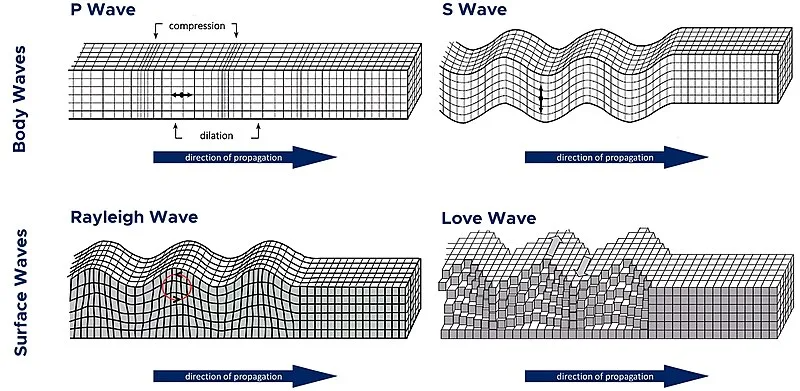August 05th Current Affairs
Table of Contents

Operation Sindoor
July 21st Current Affairs Home / Operation Sindoor Why in News? Parliament’s Monsoon Session, starting July 21, 2025, is expected to feature
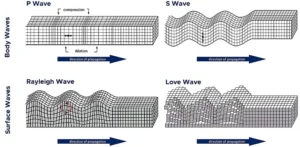
Alaska Earthquakes
July 21st Current Affairs Home / Alaska Earthquakes Why in News? On July 21, 2025, Alaska Peninsula was struck by

August 2, 2027 Solar Eclipse
July 21st Current Affairs Home / August 2, 2027 Solar Eclipse Why in News? A total solar eclipse is set

India’s milestone in clean energy transition
July 21st Current Affairs Home / India’s milestone in clean energy transition Why in News? India achieved a milestone by

‘Baby Grok’, child-friendly AI app
July 21st Current Affairs Home / ‘Baby Grok’, Child-friendly AI app Why in News? Elon Musk’s AI company xAI has announced
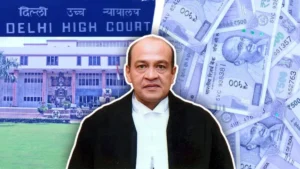
Impeachment proceedings against Justice Yashwant Verma
July 22nd Current Affairs Home / Impeachment proceedings against Justice Yashwant Verma Context On July 22, 2025, impeachment proceedings against
MGNREGA restart in Bengal
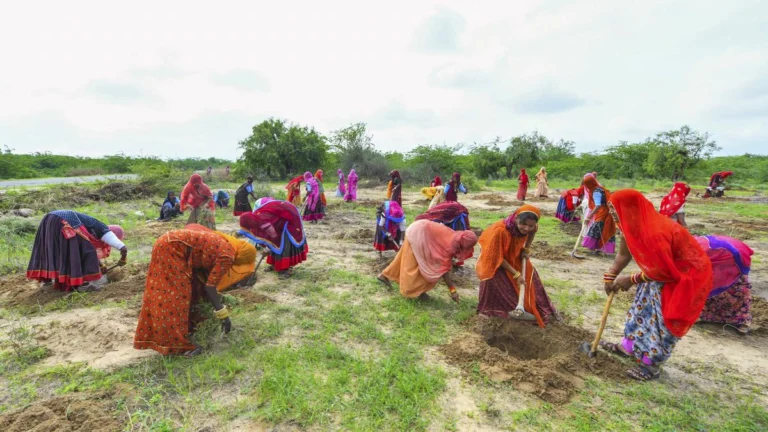
Context
The Calcutta High Court (CHC), in its order dated 18 June 2025 in Paschim Banga Khet Mazdoor Samity & Ors. vs. Union of India & Ors., directed the Mahatma Gandhi National Rural Employment Guarantee Scheme (MGNREGS) to resume prospectively in West Bengal from 1 August 2025 — nearly three years after suspension under Section 27 of the MGNREGA Act, 2005. However, the restart remains in limbo as the Centre is yet to approve West Bengal’s labour budget for FY 2025‑26, a prerequisite for funding.
Background
Funds to the State were halted from 9 March 2022 under Section 27, following allegations of misappropriation and procedural violations in several districts, notably Purba Bardhaman, Hooghly, Malda, and Darjeeling GTA. West Bengal had been among MGNREGA’s top-performing states before suspension, with approximately 76 lakh households benefiting in FY 2021‑22.
Constitutional Provisions & Legal Framework
MGNREGA, enacted in 2005, is rooted in Directive Principles (Article 41, Article 48A) and upholds livelihood security and the right to a dignified life under Article 21. It mandates at least 100 days of wage‑employment per rural household annually, and unemployment allowances if work isn’t provided within 15 days.
Section 27 of the Act authorizes suspension of payments to a State in cases of misuse, but requires timely remedial action and resumption once compliance is ensured. The HC held that indefinite suspension violates the Act’s spirit and fairness principles.
Judicial Precedents and Verdicts
In Paschim Banga Khet Mazdoor Samity & Ors. (WPA(P) 237/2023), The HC ruled that suspension can only be temporary. It ordered the scheme to restart prospectively from 1 August 2025, distinguishing between past misconduct (ongoing investigations, fund recovery) and future implementation under stricter safeguards and conditions.
Reasons Behind the Controversy
- Allegations of irregularities and fund misuse in several districts prompted central action.
- Centre suspended payments using Section 27 to uphold accountability.
- West Bengal failed to secure labour‑budget approval for FY 2022‑23 onward.
- Despite the HC’s directive, the Central Ministry has yet to clear the labour budget or resume funds, citing ongoing review.
Significance
- Social justice: Millions of rural job‑card holders remain deprived of guaranteed livelihood support.
- Federal dynamics: Highlights Centre‑State tussle over fiscal control and enforcement of accountability.
- Rule of law: The Judiciary ensures that administrative discretion under Section 27 is not absolute.
- Policy continuity: Delays weaken MGNREGA’s role as a counter‑cyclical safety net during agrarian distress and migration shocks.
Definition of Technical Terms
- Labour Budget: State’s projected labour demand under MGNREGA for the year; approval is a prerequisite to the release of funds via NREGASoft.
- Section 27: Provision under MGNREGA authorizing suspension of payment due to audit findings or violations.
- Prospective Implementation: Resumption effective only for future work (post‑August 1, 2025), not retroactive dues.
Legal Nuances
- Section 27 requires remedial action within a “reasonable period”; the court found three years of suspension unreasonable.
- Centre allowed to impose special conditions (e.g., enhanced audit, stricter monitoring) upon resumption.
- Recovered misused funds must go to the Consolidated Fund of India, not be redistributed prematurely.
Impact on Social Justice
- Suspension deprives marginalized groups—SC/ST, women, landless labourers—of their legal entitlement to work and wages.
- Forces distress migration, indebtedness, and increased poverty.
Challenges
- Political polarisation: Accusations of discrimination and selective suspension targeting one state.
- Procedural delays within the Ministry: labour budgets not cleared, even post‑court order.
- Lack of dialogue: Meetings sought by the State Ministry not held, exacerbating mistrust.
Way Forward
- Reinstate scheme with legally mandated safeguards—digital wage transfers, transparent asset tracking.
- Ensure paid unemployment allowance to eligible workers for past denial.
- Institutional cooperation: regularise state‑central dialogues to resolve disputes timely manner.
- Judicial oversight to ensure timely compliance and accountability.
Prelims MCQ
Q. Which of the following statements about the current controversy over MGNREGA implementation in West Bengal are correct?
- Section 27 of the MGNREGA Act allows the Centre to indefinitely withhold funds without timelines.
- The Calcutta High Court has ordered retrospective payment of wages to all unpaid workers.
- The resumption of MGNREGA in West Bengal is conditional on approval of the labour budget for FY 2025‑26.
Answer: Only statement 3 is correct.
Explanation:
- Statement 1 is incorrect. Section 27 permits suspension of payments in case of misuse or violations, but mandates that the Centre institute remedial measures and resume funding within a “reasonable time.” The High Court ruled that an indefinite or multi‑year suspension violates the Act’s scheme.
- Statement 2 is incorrect. The Calcutta High Court directed the prospective implementation of MGNREGA from 1 August 2025. It did not order retrospective wage payments or full compensation of past dues. Investigations into past misappropriations continue, and recovered funds must go to the Consolidated Fund of India before any disbursal decision.
- Statement 3 is correct. Resumption remains contingent on approval of West Bengal’s labour budget by the Empowered Committee in the Ministry of Rural Development. Despite the High Court’s timeline, as of early August 2025, the Centre has not yet cleared it.
Mains Question
Q. Discuss the constitutional and legal dimensions of the Centre’s suspension of MGNREGA funds to West Bengal. (10 marks)
Russia abandons nuclear treaty with the US
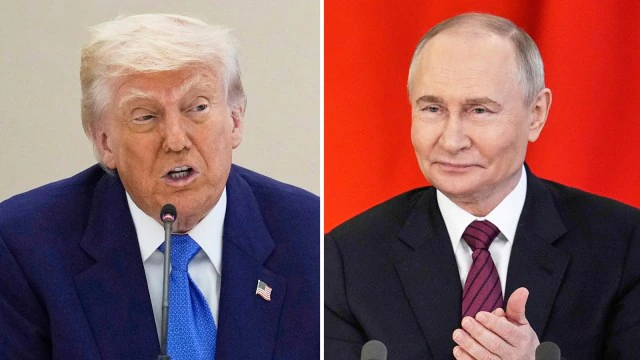
Context
On August 4–5, 2025, Russia declared it no longer feels bound by its self-imposed moratorium on intermediate- and short-range nuclear-capable missiles, signaling its formal exit from the remaining vestiges of the Cold War-era Intermediate-Range Nuclear Forces (INF) Treaty regime, following the U.S. withdrawal in 2019. The announcement came amid heightened U.S.–Russia tensions, including President Trump ordering the repositioning of two nuclear submarines in response to nuclear threats from Russia’s ex-President Dmitry Medvedev, now Deputy Chair of Russia’s Security Council.
Background
Signed in 1987 by Ronald Reagan and Mikhail Gorbachev, the INF Treaty eliminated all land‑based nuclear and conventional missiles with ranges between 500 km and 5,500 km. By 1991, nearly 2,700 missiles had been destroyed. In 2019, the U.S. withdrew, citing alleged Russian non-compliance; Russia denied the claims and initially retained a voluntary moratorium on deployments. Now that the U.S. and NATO appear to be deploying such systems, Russia says the conditions for its restraint have ceased to exist.
UN & International Law
While the INF was not a UN treaty, its demise poses risks to the non-proliferation regime and has implications under the UN Charter’s prohibition of threat or use of force (Article 2(4)). The UN Secretary-General has warned that the INF’s collapse removes “an invaluable brake on nuclear war”.
Laws and Norms
The INF Treaty instituted mutual, verifiable disarmament of an entire class of weapons. Its termination raises concerns about arms control erosion and violation of established norms of restraint—even though neither side currently faces a legal requirement to re-enter or abide by it.
Reasons
- Russia points to U.S. and NATO deployments of intermediate-range launchers in Europe, the Philippines, and Australia (e.g. Dark Eagle hypersonic system in Talisman Sabre drills) as direct threats.
- Medvedev blamed NATO’s “anti-Russian policy,” declaring that “this is a new reality” and warning that Moscow would take “further steps”.
- Trump had ordered nuclear submarines repositioned and issued ultimatums regarding Ukraine, further aggravating the situation.
Significance
- Marks the complete unraveling of the INF framework and the mutual restraint it embodied.
- Escalates global risk—nuclear competition may now extend into shorter-range theaters, particularly Europe and the Asia‑Pacific.
- Signals erosion of strategic stability, mirroring Cold War dynamics in a multipolar, technologically advanced era.
- With New START also nearing expiry and no new treaties, the world faces a reduced arms-control architecture.
Definition of Technical Terms
- Intermediate‑Range Missiles: Ground-launched missiles with ranges of 1,000–5,500 km.
- Short‑Range Missiles: Ground-launched missiles with ranges of 500–1,000 km.
- Moratorium: A unilateral restraint voluntarily adopted by a State, not a legal obligation.
- Strategic Stability: A condition minimizing incentives for preemptive or escalatory actions.
Legality
- Russia insists it did not formally terminate the Treaty—it became defunct after the U.S. unilateral exit in 2019; Moscow simply ended its voluntary moratorium.
- The decision underscores the distinction between legally bound treaty obligations and voluntary confidence-building measures.
Impacts on Global and Indian Security
- Global: Renewed arms competition, especially among the U.S., Russia, and China (which was never a party to INF), raises destabilisation risks.
- India: As a rising nuclear power outside INF jurisdiction, India must navigate intensifying great-power rivalries, heightened regional missile deployments, and implications for strategic autonomy. Potential risks include nuclear-capable missile systems near Indian borders and stockpiling in Indo-Pacific allied nations.
Challenges
- Absence of a new international mechanism to constrain ground-based INF-range weapons.
- Heightened risk of crisis escalation or miscalculation, especially in Europe or Asia.
- Difficulty in engaging in meaningful diplomacy with deep-seated mutual suspicion and hawkish rhetoric.
Way Forward
- Renewed strategic dialogues, perhaps under UN auspices, to negotiate a new or expanded treaty including China, India, etc.
- Extend and expand New START, incorporating shorter-range systems.
- Initiate confidence-building measures: missile notifications, limits on basing, and transparency.
- India could advocate for broader multilateral arms control and maintain strategic restraint in its region.
- De-escalatory diplomacy between Washington and Moscow to reduce nuclear sabre-rattling.
Prelims MCQ
Q. Regarding recent developments surrounding the INF Treaty, consider the following statements:
- Russia has formally re-entered the Intermediate-Range Nuclear Forces Treaty.
- The INF Treaty, signed in 1987, prohibited all ground‑launched missiles with ranges between 500 km and 5,500 km.
- Russia continues to consider itself bound by a voluntary moratorium on deploying intermediate-range missiles.
Which of the statements given above is/are correct?
A. 1 and 2 only
B. 2 only
C. 2 and 3 only
D. 1, 2, and 3
Answer: B. 2 only.
Explanation
- Statement 1 is incorrect. Russia has not re-entered the INF Treaty; in fact, it now says it no longer considers itself bound by its self-imposed moratorium, and the Treaty effectively ceased to exist after the U.S. withdrawal in 2019.
- Statement 2 is correct. The 1987 INF Treaty did prohibit ground-launched nuclear and conventional missiles with ranges between 500 km and 5,500 km, as well as their launchers.
- Statement 3 is incorrect. Russia has formally declared that “the conditions for maintaining a unilateral moratorium … have disappeared,” and no longer considers itself bound by that moratorium.
Mains Question
Q. Critically examine the collapse of the INF Treaty regime, with particular reference to Russia’s recent abandonment of its voluntary moratorium. (10 marks)
India’s gross GST collections rise by 7.5% YoY

Context
In July 2025, India’s gross GST collections grew by 7.5% year-on-year to ₹1.96 lakh crore, driven by moderate growth in domestic consumption and robust import-related taxation. However, after accounting for a sharp 66.8% surge in GST refunds, net collections rose by just 1.7% to ₹1.69 lakh crore—a steep drop from prior months and the slowest net growth observed since February.
Background
India’s GST regime, implemented in July 2017, reached record gross collections of ₹22.08 lakh crore in FY 2024‑25—a 9.4% YoY annual growth, doubling within five years of launch. Monthly revenues in early 2025 started strong, but growth rates tapered into single digits by June and July.
Constitutional/Statutory Framework
GST is empowered by the Constitution (One Hundred and First Amendment) Act, 2016, aligning with Article 268A for IGST and amending Articles 265, 269A, etc. The CGST, SGST, and IGST Acts define taxation powers, revenue sharing, compliance, and refund procedures to ensure seamless inflow into the Consolidated Fund of India/States.
Reasons Behind the Trends
- Refund spike mainly due to domestic adjustments, inverted duty structures, export benefits, and compliance alignments; domestic refunds doubled, while import refunds rose 20%.
- While gross domestic GST rose by 6.7%, net domestic revenues contracted by 0.2% due to refunds.
- Gross IGST from imports increased by 9.7%, and net import revenue grew 7.5% post-refunds.
Significance
- Slower net growth signals moderation in domestic economic momentum.
- Surge in refunds reflects improved automation, faster compliance‑based refund processing, and government support to exporters and exporters’ cash flows.
- Growth disparity between gross and net underscores that refund dynamics can distort revenue signals.
Key Terms
- Gross GST Collections: Total GST collected before refunds.
- Net GST Collections: Gross minus refunds, the actual revenue to the government.
- Inverted Duty Structure: When tax rates on inputs exceed outputs, creating refunds.
- Refunds: Tax reimbursed when credit exceeds liability (exports, inverted cases).
Legal/Policy
- GST law mandates timelines for refunds—beyond mandated timelines, interest components accrue.
- Advance rulings, provisions such as Rule 89, address refunds; amended to ease processing.
- Refund data reflect policy effectiveness at addressing working capital needs, particularly for exports and MSMEs.
Impacts on Fiscal Federalism
- State revenue is reliant on SGST share and IGST settlements, both hit due to slower net growth.
- Uneven state-wise performance: 20 of 38 states outperformed the national average gross growth, while states like Manipur (-36%), Mizoram, and Jharkhand saw contractions.
- Impacts the ability of states to fund welfare schemes and capital projects.
Challenges
- Balancing growth measurement: gross may look healthy,
- but net signals weakness.
- Large refunds may compress fiscal buffers; matching GST collections with GST payouts.
- Inverted rate refunds and export-linked refunds must be judiciously managed without causing budget strain.
- Slower domestic consumption/compliance improvement is needed.
Way Forward
- Sustain timely refund processing to aid the firm’s liquidity.
- Align thresholds and rationalize rate structures to reduce inverted duty triggers.
- Strengthen compliance and consumption drivers through stimulus and demand creation.
- Monitor state-level variances and tailor fiscal transfers to address disparities.
- Diversify revenue sources—strengthen direct taxes and broaden the GST base.
Prelims MCQ
Q. Consider the statements regarding GST collections in India in July 2025:
- Gross GST collections grew at 7.5% YoY, but net GST collections grew by only 1.7% due to a steep rise in refunds.
- Net domestic GST revenue rose faster than net GST revenue from imports in July 2025.
Which statement(s) is/are correct?
A. 1 only
B. 2 only
C. Both 1 and 2
D. Neither 1 nor 2
Answer: A. 1 only.
Explanation:
- Statement 1 is correct. Official data confirm that gross GST collections rose by 7.5% year-on-year to ₹1.96 lakh crore in July 2025, while net GST collections rose just 1.7% to ₹1.69 lakh crore due to refunds surging 66.8%.
- Statement 2 is incorrect. Net domestic GST revenue contracted by 0.2%, while net import revenue grew by 7.5%—import revenues outpaced domestic net performance, contrary to the statement.
Mains Question
Q. Examine the implications of the divergence between gross and net GST collections in July 2025, focusing on refund dynamics, fiscal federalism, and macroeconomic signaling. (250 words)
USCIS Tightens Family Green Card Rules
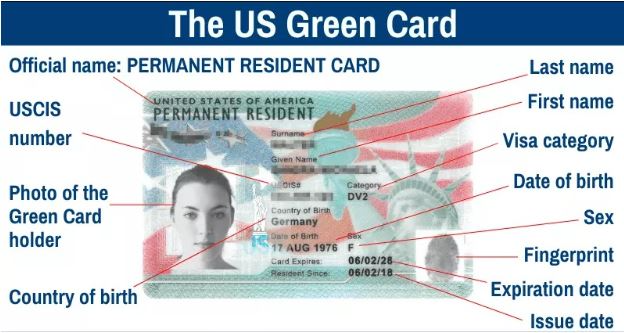
Context
On August 1, 2025, the U.S. Citizenship and Immigration Services (USCIS) introduced revised policy guidance for family-based immigrant visa petitions, leading to stricter vetting and eligibility requirements. These changes are expected to heavily impact Indian applicants, who already face long wait times under the family preference categories.
Background
India is one of the top countries in terms of family-sponsored green card applications. Many Indian nationals face delays that span over a decade, especially under the F4 category (siblings of U.S. citizens). Past USCIS policies focused primarily on documentary checks. However, with growing concerns about fraudulent marriages, duplicate filings, and backlogs, the new rules aim to add more scrutiny to petitions.
UN Provisions & Human Rights Norms
While no binding UN treaty governs family immigration, international legal frameworks such as the Universal Declaration of Human Rights (Article 16) and the International Covenant on Civil and Political Rights (ICCPR) advocate for family unity as a fundamental human right. Excessively restrictive immigration practices risk infringing on these rights.
Legal Framework & Policy Changes
The new rules are integrated into the USCIS Policy Manual and affect both pending and future petitions. Major changes include:
- Mandatory interviews in more cases.
- Stricter evaluation of joint or related petitions.
- New rules for petitions filed by U.S. citizens stationed overseas, especially military personnel.
- Clarification that an approved petition (Form I-130) does not grant lawful status and does not prevent removal if fraud is later detected.
USCIS also reinforced its authority to issue a Notice to Appear (NTA) in immigration court if an applicant is deemed removable.
Reasons for the Policy Shift
- Rise in fraudulent or frivolous petitions.
- Mounting backlogs in family-based categories.
- National security concerns, particularly post-2019.
- Desire to standardize decision-making and reduce misuse of immigration channels.
Significance of the Change
- Reflects a major shift toward security-driven immigration vetting.
- It could significantly slow down family reunification processes.
- It may discourage fraudulent filings, but it also adds complexity for genuine applicants.
- Marks a tightening of discretion available to USCIS officers in evaluating evidence and intent.
Key Terms Defined
- I-130 Petition: A U.S. citizen or green card holder files this to sponsor a relative.
- Adjustment of Status (I-485): A process for applying for a green card from within the U.S.
- Notice to Appear (NTA): A legal document initiating removal (deportation) proceedings.
- Non-meritorious Petition: A petition that lacks a legal basis, a genuine familial link, or has elements of fraud.
Impacts on India
- India faces the longest wait times under family-based green card quotas due to per-country caps.
- These stricter rules may further delay petitions, especially under F2A (spouses/children) and F4.
- Increased demand for supporting evidence (cohabitation, financial ties, shared responsibilities).
- Indian applicants may see a rise in RFEs (Requests for Evidence) or even denials.
Global Impacts
- Other countries may mirror U.S. policies, creating a ripple effect on global migration trends.
- Genuine families worldwide may face higher emotional and financial strain.
Challenges
- Risk of bureaucratic overreach or inconsistent adjudications.
- Potential for implicit bias in determining the genuineness of relationships.
- Administrative burden on USCIS staff and U.S. consular services abroad.
- Conflicts with human rights norms on the right to family life.
Way Forward
- Applicants should maintain robust documentation and seek legal counsel.
- Civil society and immigrant advocacy groups must push for transparency and fairness.
- The U.S. Congress could reform outdated quotas through legislation like the Fairness for High-Skilled Immigrants Act.
- India could initiate bilateral dialogue to advocate for fair treatment of its diaspora.
Prelims MCQ
Q. Consider the following statements about the updated USCIS family green card rules (2025):
- USCIS now mandates in-person interviews for all family-based immigrant petitions without exception.
- Approval of a family-based petition does not protect an applicant from removal proceedings.
Which of the above statements is/are correct?
A. 1 only
B. 2 only
C. Both 1 and 2
D. Neither
Answer: B. 2 only
Explanation:
- Statement 1 is incorrect. While the new rules expand the use of interviews, not all cases will require one. USCIS retains discretion and applies criteria based on risk factors and case complexity.
- Statement 2 is correct. USCIS clarified that approval of a family petition does not equal lawful status and does not shield a person from deportation if they’re later found inadmissible or removable for any reason.
Mains Question
Q. Discuss the implications of the USCIS’s 2025 family-based green card policy update on Indian applicants. How does it balance national security with human rights concerns, such as family unity? (250 words)
NASA’s Lunar Nuclear Reactor Plan Amidst the New Space Race

Context
The interim NASA administrator, Sean Duffy, is set to announce plans to build a 100-kilowatt nuclear reactor on the Moon by 2030. This comes in response to growing geopolitical competition, particularly from China’s aggressive lunar ambitions, and aims to preserve US dominance in human spaceflight.
Background
NASA has previously funded research into 40-kilowatt fission surface power systems, but this plan accelerates deployment and scales up capacity to 100 kW. The Trump administration’s appointment of Duffy, replacing Jared Isaacman, signals a strong push for space militarisation and technological superiority. NASA also plans to transition the International Space Station (ISS) to commercial operators by the end of this decade.
UN Provisions and Space Laws
- Outer Space Treaty (1967) – Prohibits national appropriation of celestial bodies and mandates peaceful exploration.
- Moon Agreement (1979) – Recognizes the Moon as the “common heritage of mankind”; not ratified by the US, China, or Russia.
- Artemis Accords (2020) – A US-led initiative emphasizing responsible space behavior; allows resource extraction under international cooperation.
- No ‘Keep-Out Zones’ – Creating exclusion zones may violate the spirit of space law, even if not explicitly outlawed.
Technical Terms Defined
- Nuclear Fission Reactor: A device that produces energy by splitting atomic nuclei—ideal for long-term, high-energy missions on the Moon where solar power is inconsistent.
- Kilowatt (kW): A unit of power. 100 kW can support habitats, life support, and scientific equipment for lunar missions.
Reasons
- Geopolitical Pressure: China plans a crewed Moon landing by 2030 with a potential China-Russia lunar base, raising strategic concerns.
- Human Spaceflight Priority: USA’s budget redirects funding toward crewed missions while cutting science programs by up to 50%.
- ISS Decommissioning: The US wants commercial platforms ready by 2030 to avoid strategic voids in low-Earth orbit.
- Technological Race: Nuclear power is essential for sustained lunar presence, which solar energy cannot always ensure.
Significance
- Strategic Leverage: The first nation to deploy a nuclear reactor on the Moon could create de facto territorial influence through “keep-out zones.”
- Space Diplomacy Shift: This move reflects a trend toward power projection in space rather than purely scientific exploration.
- Technological Advancement: Will push nuclear miniaturization and safety protocols applicable to both space and Earth.
Legal
- Dual-Use Technology: Civil nuclear systems can be perceived as having military potential, violating the peaceful-use clause of the Outer Space Treaty.
- Exclusivity & Resource Control: The plan raises concerns over equitable access, especially if “keep-out zones” emerge.
- Commercial Partnerships: Privatising ISS and Moon activities must comply with US domestic law (e.g., Commercial Space Launch Competitiveness Act, 2015) and global norms.
Impacts on
- India:
- ISRO’s Gaganyaan and Chandrayaan-4 timelines may be pressured.
- Need to accelerate work on nuclear propulsion (like the Indian Molten Salt Reactor project).
- Could explore deeper cooperation under the Artemis Accords (India joined in 2023).
- Global Impact:
- Potential arms race in space technology.
- Need for new international frameworks on nuclear and territorial governance in space.
- Environmental concerns over lunar contamination and debris.
Challenges
- Budget Constraints: Severe funding cuts to NASA’s science programs raise concerns over sustainability.
- Technical Risks: Nuclear systems require extreme radiation shielding and robust containment to prevent lunar contamination.
- Geopolitical Tensions: Could prompt retaliatory space developments by China or Russia.
- Legal Grey Zones: Absence of binding international mechanisms on nuclear energy use in space.
Way Forward
- Multilateral Dialogue under the UN COPUOS (Committee on the Peaceful Uses of Outer Space) to update space laws for nuclear and territorial matters.
- Global Code of Conduct for nuclear installations and resource extraction.
- Strengthen space diplomacy and confidence-building measures among spacefaring nations.
- Promote public-private partnerships for ISS alternatives and technology development.
- Encourage India to invest in nuclear propulsion and space energy systems to avoid strategic lag.
Prelims MCQ
Q. Consider the following statements regarding the recent US plan to build a nuclear reactor on the Moon:
- The project aims to deploy a 40-kilowatt nuclear reactor by 2026 to support the Artemis-III crewed mission.
- The Outer Space Treaty prohibits any nation from establishing territorial claims or exclusion zones on the Moon.
Which of the above statements is/are correct?
A. 1 only
B. 2 only
C. Both 1 and 2
D. Neither 1 nor 2
Answer: B. 2 only
Explanation:
Statement 1 is incorrect. The current US plan, as announced by acting NASA chief Sean Duffy, is to request proposals for a 100-kilowatt reactor by 2030, not 40 kW. While a 40-kW prototype was previously studied, the current plan supersedes that.
Statement 2 is correct. The Outer Space Treaty (OST), 1967, signed and ratified by the US, clearly prohibits national appropriation by any means. This includes territorial claims or establishing any zones of sovereignty, like “keep-out zones.” However, the treaty lacks enforceable mechanisms, and new interpretations (especially under the Artemis Accords) are emerging.
Mains Question
- Discuss the strategic and legal implications of NASA’s plan to deploy a nuclear reactor on the Moon in the context of rising geopolitical competition in space. (150 words)




